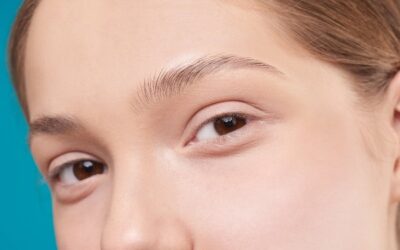Overview – Common Side Effects of Dermal Fillers
Dermal fillers have become a popular choice for individuals seeking to enhance their facial features, restore lost volume, and reduce the appearance of wrinkles without undergoing invasive surgery. While dermal fillers are generally safe and effective, like any cosmetic procedure, they come with potential side effects. Understanding these side effects can help you make an informed decision and prepare for what to expect. In this blog post, we’ll explore the common side effects of dermal fillers, how to manage them, and when to seek medical advice.
What Are Dermal Fillers?
Dermal fillers are injectable substances used to add volume, smooth out wrinkles, and enhance facial contours. The most commonly used fillers are made of hyaluronic acid, a naturally occurring substance in the body. Other types of fillers include calcium hydroxylapatite, poly-L-lactic acid, and polymethylmethacrylate (PMMA). These fillers are injected beneath the skin to provide immediate results with minimal downtime.
Common Side Effects of Dermal Fillers
While dermal fillers are generally well-tolerated, some side effects are relatively common. These side effects are usually mild and temporary, resolving on their own within a few days to weeks.
-
Swelling
- What to Expect: Mild to moderate swelling at the injection site is common and typically subsides within a few days.
- Management: Apply ice packs to the treated area to reduce swelling. Avoid strenuous activities and excessive sun or heat exposure for the first 24-48 hours.
-
Bruising
- What to Expect: Bruising can occur due to the needle penetrating the skin and small blood vessels. It may last for a few days to a week.
- Management: To minimize bruising, avoid blood-thinning medications and supplements before the procedure. Applying arnica gel or taking arnica tablets may help reduce bruising.
-
Redness
- What to Expect: Temporary redness at the injection site is common and usually resolves within a few hours to a couple of days.
- Management: Redness can be managed by avoiding harsh skincare products and excessive heat. Gentle skincare and cool compresses can help soothe the skin.
-
Tenderness
- What to Expect: Tenderness or discomfort at the injection site is common and typically lasts for a few days.
- Management: Over-the-counter pain relievers like acetaminophen can help alleviate discomfort. Avoid touching or massaging the treated area.
-
Itching
- What to Expect: Some individuals may experience mild itching at the injection site, which usually subsides within a day or two.
- Management: Avoid scratching the area. If itching persists, consult your practitioner for advice.
Less Common Side Effects
While less common, some individuals may experience more pronounced side effects. It’s essential to monitor your symptoms and seek medical advice if you experience any of the following:
-
Lumps or Bumps
- What to Expect: Small lumps or bumps under the skin can form if the filler is not evenly distributed.
- Management: Gentle massage by your practitioner can help smooth out the filler. If the issue persists, additional treatments may be necessary.
-
Allergic Reactions
- What to Expect: Rarely, individuals may have an allergic reaction to the filler material, resulting in redness, swelling, and itching.
- Management: If you suspect an allergic reaction, seek medical attention immediately. Your practitioner may prescribe antihistamines or other medications to manage the reaction.
-
Infection
- What to Expect: Although rare, infections can occur at the injection site, characterized by redness, swelling, pain, and sometimes fever.
- Management: If you notice signs of infection, contact your practitioner immediately. Antibiotic treatment may be necessary.
-
Vascular Complications
- What to Expect: In very rare cases, filler can be inadvertently injected into a blood vessel, leading to vascular complications such as skin necrosis or blindness.
- Management: Immediate medical intervention is required. Choose an experienced and qualified practitioner to minimize the risk of such complications.
How to Minimize Side Effects
While some side effects are unavoidable, there are steps you can take to minimize them:
- Choose a Qualified Practitioner: Ensure that your practitioner is board-certified and experienced in administering dermal fillers.
- Follow Pre-Treatment Instructions: Avoid blood-thinning medications and supplements for at least a week before your treatment.
- Adhere to Aftercare Guidelines: Follow your practitioner’s aftercare instructions to reduce the risk of complications and enhance your results.
When to Seek Medical Advice
While most side effects are mild and temporary, seek medical advice if you experience:
- Severe pain or swelling
- Signs of infection (redness, warmth, discharge, fever)
- Allergic reactions (hives, difficulty breathing, severe swelling)
- Unusual or prolonged side effects
Summary of the Common Side effects of Dermal Fillers
Dermal fillers offer a safe and effective way to enhance your appearance and boost your confidence. By understanding the common side effects and how to manage them, you can ensure a smoother experience and achieve the best possible results. Always choose a qualified practitioner and follow their advice to minimize risks and enjoy the benefits of dermal fillers.
If you have any questions or concerns about dermal fillers, don’t hesitate to reach out to us for more information or to schedule a consultation.



